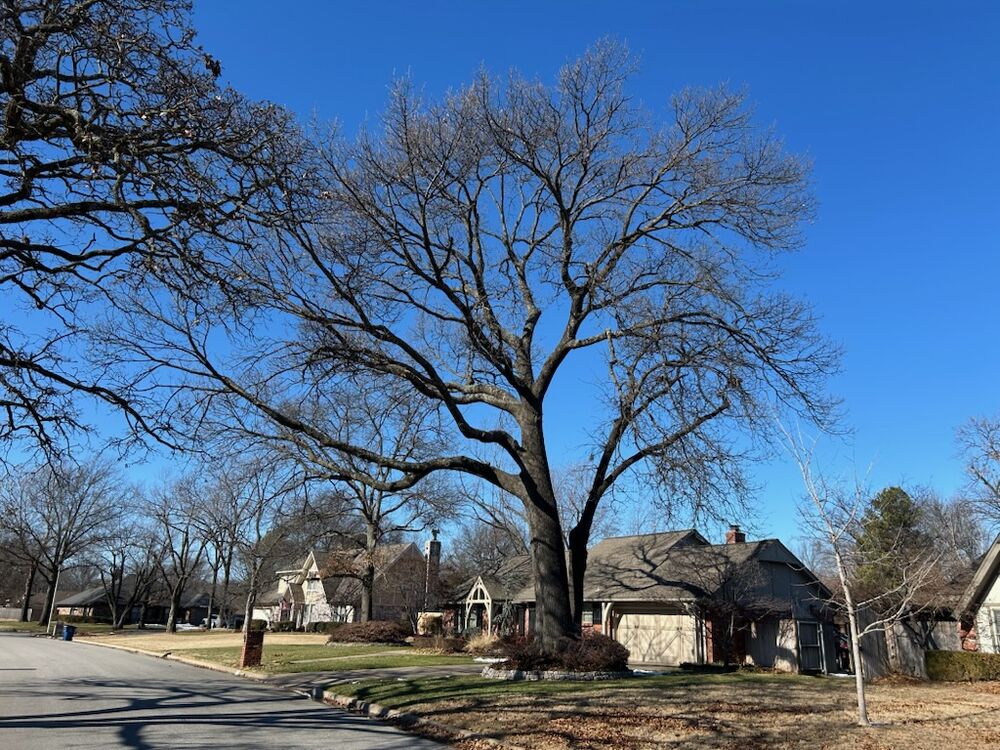Written Jan 15, 2025

1. Water Wisely
Trees, like all plants, need water to survive, but the way you water them makes all the difference. A young tree, especially one planted within the past three years, needs consistent watering to establish its roots. Deep watering is key—allowing water to penetrate the soil to a depth of 12–18 inches. This encourages roots to grow downward, which strengthens the tree.
For established trees, infrequent but deep watering is best. Use a slow-release method, like a soaker hose or a bucket with small holes, to prevent water runoff and maximize absorption. Avoid watering the leaves as this can lead to fungal diseases. Monitor rainfall in your area to ensure trees get about 1–1.5 inches of water weekly.
2. Mulch for Moisture
Mulching does more than make your garden beds look tidy. A well-applied layer of mulch acts as a natural insulator, helping the soil retain moisture and stay cool during hot weather. Organic mulch—like wood chips, shredded bark, or compost—is ideal because it gradually breaks down, enriching the soil.
Spread the mulch in a 2–4-inch layer around the base of the tree, forming a doughnut shape. Avoid piling mulch against the trunk (known as a “mulch volcano”) as this can trap moisture against the bark, leading to rot and inviting pests.
3. Prune with Purpose
Pruning is a critical part of tree care, but it’s important to do it right. Start by removing dead, diseased, or damaged branches, as they can attract pests or spread diseases. Next, thin out crowded areas to improve airflow and light penetration. This promotes healthy growth and reduces the risk of fungal infections.
Prune trees during their dormant season, typically late winter or early spring, to minimize stress. Always use clean, sharp tools, and avoid cutting too close to the trunk—leave the branch collar intact, as this helps the tree heal naturally.
4. Know When to Fertilize
While trees in natural settings often thrive without human intervention, those in urban or suburban landscapes may need a nutrient boost. Fertilization is especially helpful for young trees or those showing signs of nutrient deficiency, like yellowing leaves or stunted growth.
Before applying fertilizer, test your soil to determine its nutrient levels. Use a slow-release fertilizer tailored for trees, and apply it in early spring or late fall to give the tree a steady supply of nutrients during its growing season. Avoid over-fertilizing, as this can harm the tree and the surrounding environment.
5. Watch for Pests and Diseases
Pests and diseases are among the biggest threats to tree health. Common issues include aphids, borers, and fungal infections like powdery mildew or root rot. Regularly inspect your trees for early signs of trouble, such as discolored leaves, holes in the bark, or unusual growths.
If you notice an issue, act quickly. Many pests and diseases can be managed with natural remedies, like neem oil or insecticidal soaps. For severe infestations or diseases, consult a professional arborist who can recommend targeted treatments or pruning strategies.
6. Protect the Root Zone
A tree’s root system is its lifeline, and damage to this vital network can lead to serious health issues. The root zone usually extends 1–2 times the width of the tree’s canopy, so protect this area from heavy foot traffic, parked cars, or construction activities that can compact the soil.
Avoid planting grass or invasive plants around the base of the tree, as they compete for nutrients and water. Instead, use mulch or ground cover plants that are tree-friendly and won’t disturb the roots.
7. Avoid Overwatering
While under-watering is harmful, overwatering can be just as damaging. Too much water saturates the soil, leading to root rot and fungal diseases. A simple way to check soil moisture is to insert a finger or a small spade into the soil about an inch deep. If it feels damp, hold off on watering.
Established trees generally require less water than young ones. During rainy seasons, ensure proper drainage to prevent standing water around the base of the tree.
8. Be Mindful of Construction
Construction projects near trees can be detrimental if not handled carefully. Heavy machinery can compact soil, sever roots, or damage the tree’s trunk. If you’re planning to build or landscape near trees, consult an arborist beforehand to create a tree protection plan.
This plan might include fencing off the root zone, adjusting grading to avoid changes in soil levels, or scheduling construction during the tree’s dormant season to minimize stress.
9. Prepare for Storms
Storms can wreak havoc on trees, causing broken branches or uprooting entire trunks. Regular maintenance, like pruning weak or dead branches, can help minimize damage.
Inspect your trees before storm season and address any structural weaknesses, like split trunks or overly dense canopies. For larger trees or those near structures, consider hiring a professional to evaluate their stability and recommend preventative measures.
10. Know When to Call the Pros
Sometimes, tree care requires expertise beyond what a homeowner can provide. If you’re dealing with a hazardous tree, a disease outbreak, or simply want advice on maintaining your trees, don’t hesitate to contact a professional tree service like Ironwood Tree Co.
Professional arborists have the training and tools to handle complex issues safely and effectively. Whether it’s pruning, removal, or health assessments, investing in expert care ensures your trees remain a valuable part of your landscape.
By following these tips, you’ll not only enhance the beauty of your yard but also contribute to a healthier, more sustainable environment. Have questions or need assistance with your trees? Reach out to Ironwood Tree Co.—your trusted partner for professional tree care.